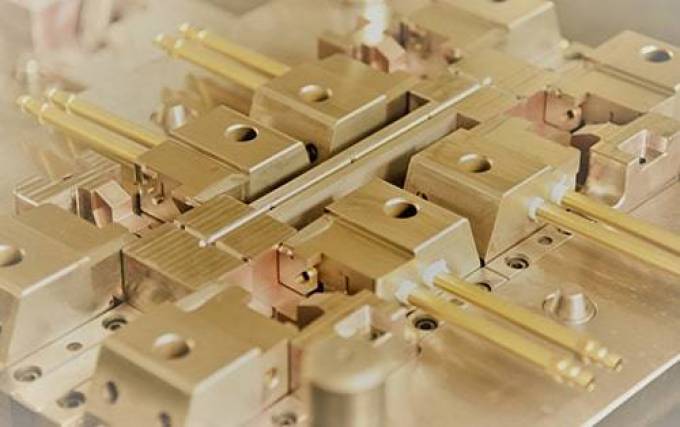Best Practices for Creating Complex Molds with Precision
Published By China Casting, 16 Oct 2023

Complex molds are vital components in industries like automotive, aerospace, and manufacturing, where precision and consistency are non-negotiable.
Here in this article, we'll explore how to achieve precision in molds with China Moldmaking. We'll delve into the intricate world of complex molds, exploring the meticulous steps and considerations required to create them with the utmost precision.
Understanding Complex Molds
Complex molds are intricate tools used to shape a wide range of materials, including plastics, metals, and composites. Their significance extends to various sectors where precise and high-quality parts are an absolute necessity.
You'll often find these molds in automotive manufacturing, where intricate vehicle components demand exacting precision, or in the aerospace industry, where safety and performance hinge on every minute detail.
Wasting no more time, let's explore the best practices for creating complex molds with precision:
1. Materials Selection
Selecting the right materials for complex molds is a cornerstone of precision China Moldmaking. Choosing materials that offer durability, longevity, and the ability to withstand the demands of high-volume production is crucial.
Common materials include tool steel, aluminum alloys, and special grades designed for specific applications. The selection process is affected by factors such as the material to be molded, production volume projections, and budget considerations. This critical decision sets the stage for the mold's performance and longevity.
2. Design and CAD Modeling
Precision in complex mold-making commences with a meticulous design phase aided by Computer-Aided Design (CAD) modeling. CAD technology allows engineers to craft intricate 3D models of molds, serving as the blueprint for subsequent manufacturing stages.
The precision achieved during the design phase directly impacts the final product's quality. Factors like part geometry, draft angles, and gating systems are fine-tuned during this phase to ensure the mold will produce parts with exacting precision.
3. Precision Machining Techniques
The heart of creating complex molds with precision lies in precision machining techniques. Computer Numerical Control (CNC) milling machines take center stage, leveraging computer-controlled movements to sculpt intricate details on mold components.
On the other hand, Electrical Discharge Machining (EDM) uses electrical sparks to meticulously cut through materials with extraordinary precision. These techniques allow for the creation of complex, high-precision molds that meet the strictest quality standards.
4. Quality Control and Inspection
Quality control stands as the sentinel guarding precision in China Moldmaking. Rigorous inspection processes are in place to ensure every complex mold conforms to strict specifications.
It includes dimensional checks to verify each part aligns precisely with design parameters, surface finish assessments to guarantee a flawless exterior, and scrutiny of cooling and ventilation systems to maintain uniform temperature control. Each step in the inspection process aims to maintain and enhance the precision of complex molds.
5. Surface Finish and Texture
Attaining the desired surface finish and texture in complex molds is an art in itself. This aspect is particularly important in industries where aesthetics and functionality are paramount.
Achieving the desired finish involves careful planning and the use of various techniques, such as polishing, etching, or applying specific textures.
The result is not merely visual appeal but also functional excellence, as the right finish can improve part release, reduce friction, and enhance overall mold performance.
6. Cooling and Ventilation Systems
Temperature control is integral to precision in complex moldmaking. Molds often feature intricate cooling and ventilation systems designed to regulate temperature during the molding process.
These systems ensure uniform part quality and prevent defects like warping or shrinkage. Achieving precision in the design and implementation of these systems is a non-negotiable step for maintaining consistent, high-quality output.
7. Mold Maintenance and Longevity
Mold maintenance is not a one-time task but a lifelong commitment to preserving precision and longevity. Regular cleaning, lubrication, and inspection are the cornerstones of mold maintenance.
Diligently following maintenance schedules and promptly addressing wear and tear can extend the lifespan of your complex molds and uphold the precision they deliver.
Final Thoughts
Precision China Moldmaking is the bedrock upon which industries reliant on complex molds stand. This journey through the intricacies of material selection, design, machining, and quality control has highlighted the essential practices for achieving precision. Mastering these aspects can help ensure the consistent production of high-quality, precise components for a wide array of applications.
If you seek expert guidance on precision moldmaking or have questions about specific techniques, iMold USA, LLC is here to assist you. We're committed to achieving precision in China Moldmaking endeavors and ensuring the success of your projects. Don't hesitate to reach out, as we're just a message away.
